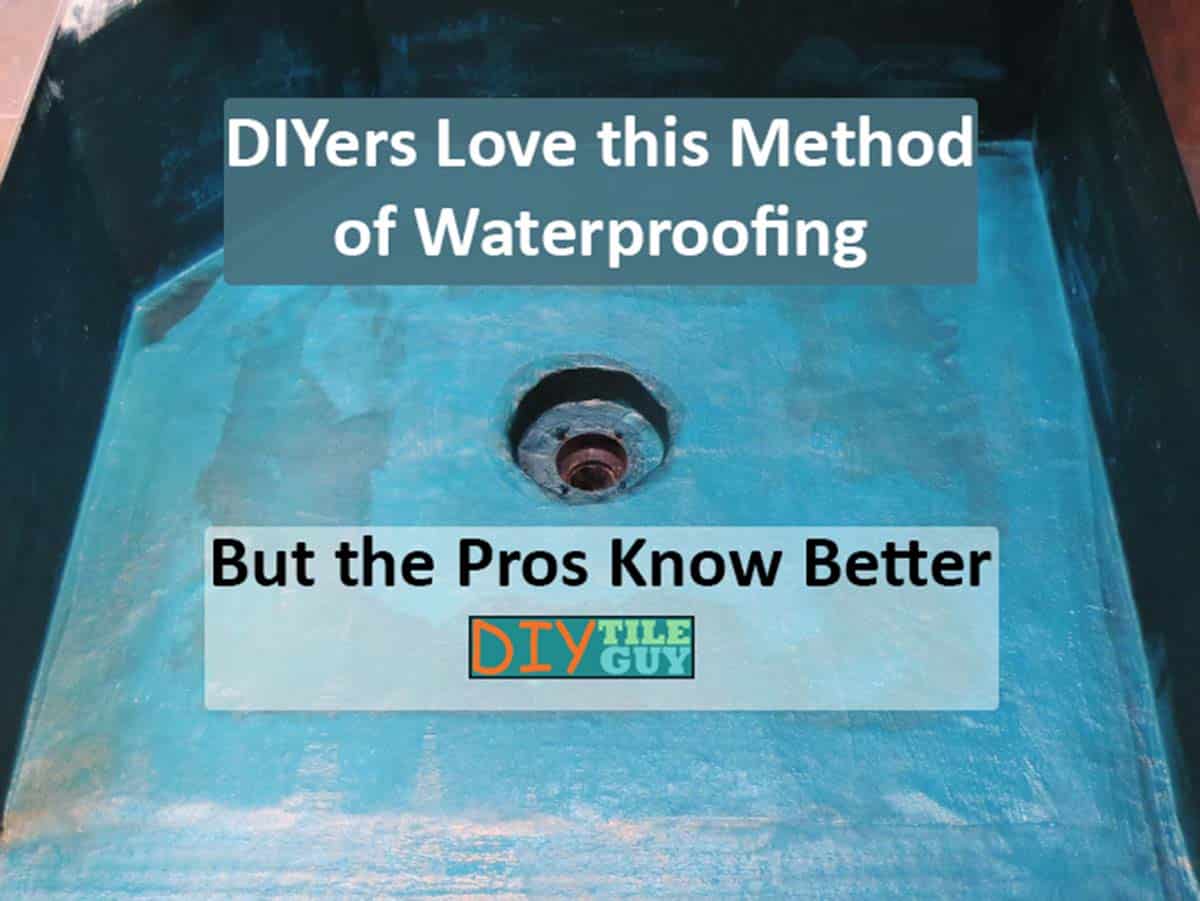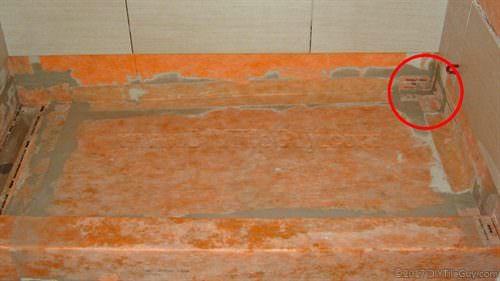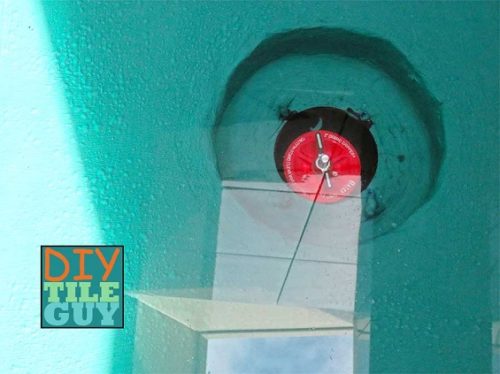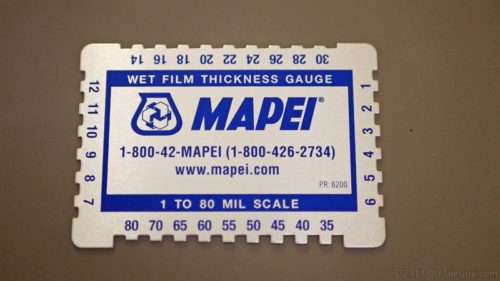There’s more than one way to waterproof a shower. But liquid waterproofing is an especially enticing method for building a watertight shower pan, particularly with DIYers.
So, here’s the thing:
- You’re using an industry-approved waterproofing method
- You’re following the instructions on the label
- You feel confident in your skills

Why shouldn’t you build a shower pan with liquid waterproofing? What is the issue?
Liquid Waterproofing for Tile
Liquid waterproofing products are very popular. Some of the more popular names are:
- Redgard (Custom Building Products)
- Hydroban (Laticrete)
- AquaDefense (Mapei)
These products are commonly found in retail box stores, have been around for years, and come with long track records of success.
Why DIYers love liquid waterproofing
There are several reasons why this waterproofing method would be one’s preferred choice.
Everyone knows how to Paint
It incorporates a skill that you already know how to do- paint!
Yes, there are other methods of applying these products but most people are going to choose to roll and/or brush the waterproofing onto the surface.
Whereas sheet membranes, like the Kerdi Shower System from Schluter, requires mixing mortar (can you even get the mortar to the right consistency?), cutting and fitting sheets, troweling thinset, etc.
These are learned skills and you may not feel you’ve learned them well enough to waterproof your entire shower.
Especially, when the alternative is painting.

No build up in the corners
Another big advantage of painting liquid waterproofing on a shower pan is that you don’t have to worry about overlapping your sheets in the corners.
When you have to overlap the sheets you make the corners thicker than the rest and this makes your walls and floors less-flat.
Why liquid waterproofing is a bad idea
However, a few key issues with products like Redgard, Hydroban, and AquaDefense are worth paying attention to.
Human error with liquid waterproofers
When you are applying the liquid there is always going to be the chance that you aren’t thorough enough, you miss a spot, or there is a section that is too thin.
With a sheet membrane, the thickness of the waterproofing product is consistent. But when you are painting the product onto a wall or floor, the membrane will vary in thickness.

Too thick is often worse than too thin
Most people understand that missing a spot or not having enough product is a big problem. So, they compensate. “Let’s put a whole bunch of this waterproofing paint on so there won’t be any thin spots!”
This is always a mistake. I think most of the problems arise, not from the product being too thin, but from being too thick.
One common mistake happens when the shower pan is flood-tested for leaks. The liquid waterproofing will bubble up and create little air pockets that aren’t bonded to the shower pan.
Repairs are nearly impossible
Lastly, repairs are nearly impossible with a liquid-applied waterpoofing on a shower floor.
When you remove a tile, it will almost always compromise the waterproofing on the shower floor. Then, how do you repair it?
You can put more in there but there’s no guarantee that the new liquid will tie-in and bond properly with the old waterproofing membrane.
Liquid waterproofing has it’s place
With the above negatives in mind, let’s not vilify liquid waterproofing products. They have their place and are great products for certain applications.
Walls, benches, niches, half-walls
Redgard, AquaDefense, and Hydroban are great products for waterproofing bathtub and shower walls, recessed shampoo niches, the tops of shower benches, and half-walls.
While you can waterproof these areas using other products, the liquids are well-suited for these types of applications. It won’t be the end of the world if you have to replace a tile in one of these applications.

Use a wet-film gauge
A tool everyone should use when applying these products is a wet-film gauge. This tells you how many ‘mils’ you are applying the waterproofing membrane.
This way, you can be sure not to get it too thin or too thick.
What to use for waterproofing your shower pan instead
OK. So, what’s a better choice for waterproofing a shower pan? Here are 4 options I prefer rather than use a water-based liquid waterproofing product.
Waterproof sheet membrane
Waterproof sheet membranes, like the Kerdi waterproofing membrane, are a great option. Installed correctly, they perform very predictably.
You still have to use great care when making a repair but it’s something that typically can be done without compromising the whole shower pan.
The build-up in the corners is a negative but not insurmountable.
Urethane
Did you know that they make a urethane version of Redgard? Yep. It’s called Redgard Speedcoat. Same thing with Hydroban (Hydroban XP).
Both of these choices are more durable and less finicky than their water-based versions.
Cementitious coating
Ardex 8+9 is an example of a cement-based waterproof membrane. I would never have guessed that there would be a cement-based waterproof membrane. But there is and it’s a pretty nice product.
It’s 2 parts that you mix together and trowel-applied. Don’t knock it until you try it. It performs quite well.
Waterproof foam panel systems
For the final option, there are waterproof foam shower systems that work well.
Examples of these types of systems are the Kerdi-shower system using Kerdi board, Wedi shower system, GoBoard, and many others.
These are very different than a paint-on membrane but are intriguing options for the right application
Bottom Line on liquid waterproofing
Yes, you can use a water-based liquid waterproofing product, like Redgard, AquaDefense, or Hydroban for a critical area like a shower pan but I don’t recommend it.
There are much better options than relying on a risky water-based application. Remember, no matter what product/method you use, you should flood test every shower you build.
Leave a Reply